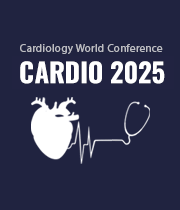Title : The role of normal-range troponin trends in predicting cardiac function decline: Reducing echo dependency in the ED
Abstract:
Background: Left ventricular systolic function is not well-characterized in patients with low high-sensitivity cardiac troponin I (hs-cTnI) evaluated in the Emergency Department (ED).
Methods: A stepped-wedge randomized trial conducted from July 2020 to March 2021, involved patients being evaluated for myocardial infarction (MI) using a 0/1-hour protocol in 9 EDs within Henry Ford Health in Detroit, Michigan. Our analysis focused on 737 patients with ejection fraction (EF) data. All patients had hs-cTnI ≤ 18 ng/L (MI threshold, Beckman Coulter) in the ED.??Patients were grouped by hs-cTnI terciles (<4, 4–6, and 7–18 ng/L), and EF was categorized as normal (≥50%), mildly reduced (41-49%), and reduced (≤40%).
Results: As seen in the Figure below, as hs-cTnI levels increase there is a noticeable decline in the proportion of patients with a normal EF. In patients with the lowest hs-cTnI levels, nearly all maintain a normal EF>50%. As the hs-cTnI levels increase, the proportion of patients with an EF <40% continues to increase.
Conclusion: These findings suggest a trend of decreasing ejection fraction as hs-cTnI levels increase, with a notable rise in the proportion of patients having an EF ≤40% in the highest hs-cTnI group.?Patients with hs-cTnI<4 ng/L in the ED are very unlikely to have left ventricular systolic dysfunction.



